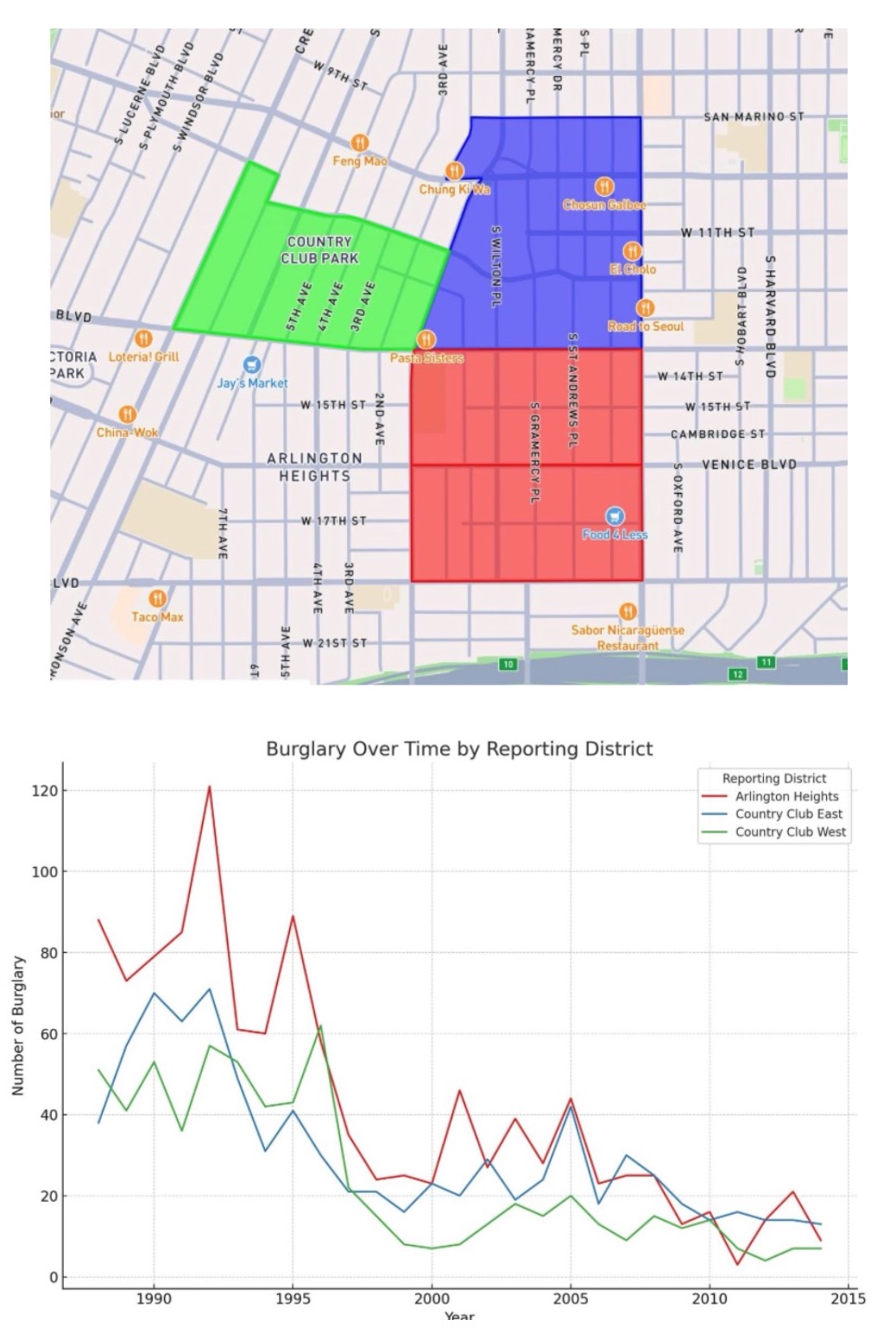Comments
NEIGHBORHOOD - A controversy is brewing in Los Angeles’ Country Club Park as residents express outrage over the continued presence of illegal traffic gates and the willful resistance of Heather Hutt’s CD10 office to acknowledge their illegality.
The legal justification for the installation of temporary gates is to calm down traffic resulting from of an abundance of crime committed in that neighborhood, primarily prostitution, drug dealing and burglaries. Here's the catch; once that crime has calmed down and there are no longer prostitutes using the streets or drug dealers selling out of their cars, or robberies have declined, the gates are supposed to come down. Hence the word “temporary’ The community is required to renew the permits every 18 months until the crime has calmed down and then they are removed. After 9 years the gates come down permanently.
Despite being installed in 2000 by the Country Club Park Neighborhood Association (CCPNA), according to the Bureau of Engineering, the gates in Country Club have remained in place without proper permits for 24 years. The gates were installed set back from Pico Boulevard creating a divide between neighbors who lived on south side close to Pico, (apartments some single-family houses, some businesses) and the Neighbors on the north side who live in large single-family homes. The barriers have caused a significant inconvenience for residents living south of the gates, sparking accusations of economic segregation and neglect from city officials.
The community group Open Sidewalks LA (OSLA), led by activist Max Hawkins, has been rallying against the gates, citing the significant problems they create for pedestrians; especially seniors, people with disabilities, and children who, if they have to go north, are forced to walk a significant distance out of their way to get around the barriers. Particularly difficult in the heat or rain. Additionally, emergency responders face delays, and street sweepers avoid the south side of the gates due to the difficulty in maneuvering around the smaller space, yet the city has continued issuing parking tickets to residents for street cleaning days. One resident has taken it upon himself to sweep his block every week.
OSLA gathered 1,927 petition signatures and over 500 written testimonials from affected residents. During a recent meeting between OSLA, the Country Club Park Neighborhood Association (CCPNA), and CD 10 officials, tensions flared when Kimani Black, Chief of Staff to Councilwoman Heather Hutt, dismissed the data and testimony provided by OSLA, with statements such as “facts and figures don’t matter, it’s the feelings that matter.” and “We don’t need to find a statute or law to determine whether the gates should be there.” OSLA member Max Hawkins remarked that the public right of way cannot be blocked without legal justification, to which Mr. Black replied, “that’s your belief.” (CD 10 ignored an effort to verify these comments but there were witnesses) This remark left many community members feeling disrespected and frustrated by the lack of transparency and accountability.
Emails obtained by OSLA through the California Public Records Act revealed that the gates' legal status was on shaky ground, with one CCPNA representative cautioning that further scrutiny would likely result in their removal.
Adding to their frustration, OSLA presented evidence that crime in the area had actually increased following the installation of the gates, contrary to their intended purpose. An analysis conducted in collaboration with the University of Pennsylvania’s Department of Criminology showed that while crime had decreased significantly before the gates were installed, it spiked again after the installation with a 23% increase in burglaries within a few years. Despite this data, CD 10 representatives and CCPNA members would not acknowledge OSLA’s concerns and refused to take action.

Many residents south of the gates, believe the gates are less about crime prevention and more about exclusion and reinforcing economic divides between homeowners on one side and apartment dwellers on the other. Community member Arturo Cambron emphasized that the gates symbolize segregation, stating, “These gates were never about crime—they were about exclusion.”
As a possible alternative, Heather Hutt’s office has proposed turning one of the gated streets into a pocket park, but no solution has been offered for the other gated streets, leaving many residents skeptical about any meaningful resolution. OSLA continues to demand the removal of the gates and the restoration of public access to the streets, urging city officials to address the long-standing legal violations and the community’s concerns.
For more information about Open Sidewalks LA’s efforts, go to
https://www.instagram.com/opensidewalks.la/
(Dianne V. Lawrence is publisher and writer for The Neighborhood News Online, where this article was published.). http://www.theneighborhoodnews.net






